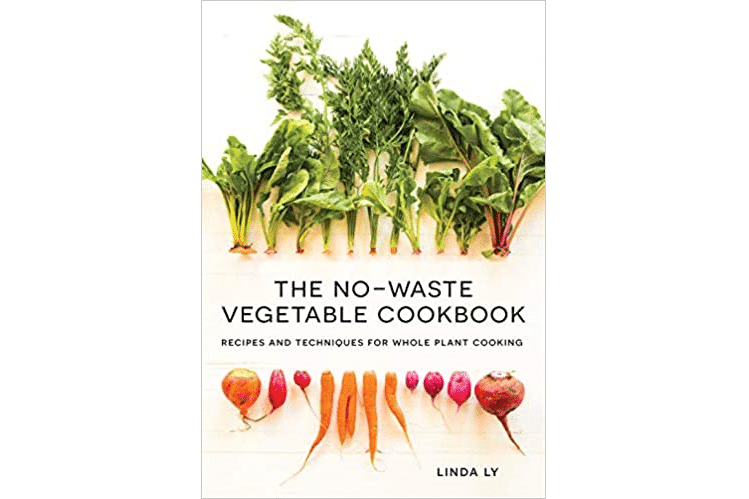he No-Waste Vegetable Cookbook, Recipes and Techniques for Whole Plant Cooking. By Linda Ly, Photography by Will Taylor. Quarto Publishing Group USA Inc. 2020
I’m a city girl who slowly started experimenting with urban gardening, eventually transitioning (through much trial and error) to growing crops on a rural farm over several decades. I have always thrown the tops of my root veggies right into the compost bin. Earlier this summer, my French friend Patrick mentioned eating carrot fronds in a discussion about the culinary value of radish greens. I cooked the radish greens and I saved the tender carrot fronds when I thinned the first planting in my vegetable garden. After washing the bright green parsley–like leaves I tossed them into the food processor with a clove of garlic, a dash of salt, a squeeze of lemon, olive oil and a few pine nuts. Voilà — a delicious pesto! I’ve repeated the process several times, loving the unique flavor that hints of carrots, that is so easy and versatile. It works as a dip, spread, pasta sauce, and topping for roasted carrots. I’ve grown more accustomed to enjoying the top and side parts of veggies I previously thought of as waste, as my kitchen gardening has expanded in this exceptional season. I made pickled garlic scapes that are nice in salads and fun in a Martini or Bloody Mary. I recently discovered that the spines of chard, beet tops and kale are great on the grill with a garlic-oil drizzle.
At about the same time as I was delighting in the carrot fronds, my onions were getting ready to be harvested. A Google ”how-to” search serendipitously located GardenBetty.com where I found the answers to all my questions, plus a link to the author, Linda Ly’s newest book, The No-Waste Vegetable Cookbook, Recipes and Techniques for Whole Plant Cooking. As a self-taught gardener and cook used to trial and error, I don’t generally seek in-depth information or follow recipes too carefully. But my interest was piqued by my recent small successes with radish and carrot by-products. Too much effort was going into tending of this year’s garden not to find out more about preserving and using my produce. Linda Ly’s wonderful book feels like it was written for me. The book includes a recipe for Carrot Top Salsa! I was hooked by the author’s words “I’ve always considered cooking as an art, rather than an exact science.” With exquisite photographs by her husband, Will Taylor, and straightforward recipes, the book is about finding flavor in unexpected places. Every part of the plant, even the scraps, imparts a different flavor and texture to a dish. The book is not a manifesto on food waste, but about the joy of using the whole vegetable in everyday cooking.
The author, whose parents lived through war-era Vietnam, comes from a culture where food is a celebration of life. As I write, I am looking at a half watermelon rind in my compost bucket, and anxious to retrieve it for Watermelon Rind Pickles. The chard stems that regularly go into the same bucket will become Chard Stem Hummus, a dish the author says is as common in Lebanon as chickpea hummus. The kale stems will be saved for Kale Pesto. And finally I have a plan for the mammoth fennel fronds that were purely decorative until now, but are destined to be delicious in a Ginger Fennel Pesto.
Linda Ly wrote in the preface that many of her “friends didn’t know that you could eat radish tops, let alone carrot tops.” I have to admit that I, and many of my foodie friends, still don’t. I’m not completely convinced that Tomato Leaf Pesto will be a big success, but I’m eager to try it and thrilled to be educated on ‘top-to-tail’ cooking. Linda’s most memorable meals have not been prepared in the many places to which she has traveled, but from her own kitchen and garden, simple and fresh, inventive and inexpensive. This is a sentiment many of us share and can find particularly comforting at this moment. ![]()
